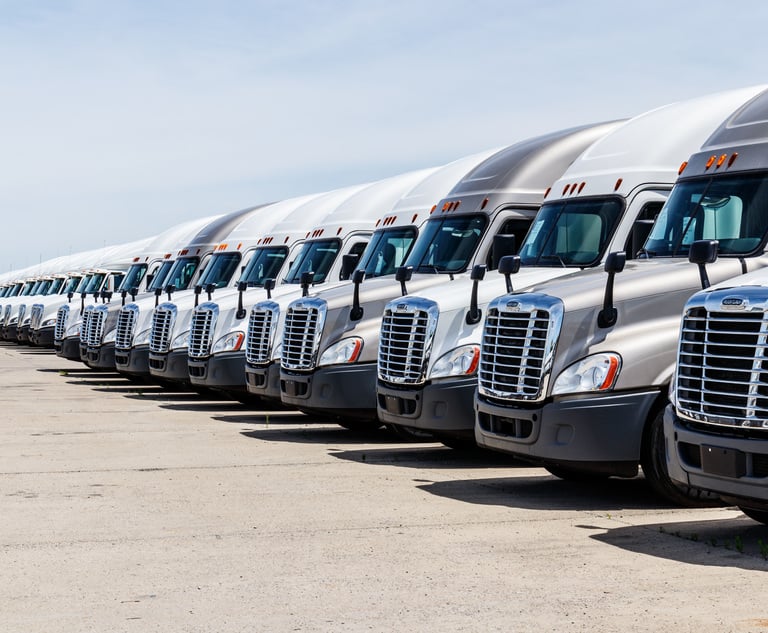 Inland marine insurance coversproducts, materials and equipment that's transported or storedwhile en route to a final destination. (Shutterstock)
Inland marine insurance coversproducts, materials and equipment that's transported or storedwhile en route to a final destination. (Shutterstock)
Even before the world watched in horror last month as flamesthat may have been sparked by renovation work engulfed the iconicNotre-Dame de Paris, members of the Inland Marine Insurance UnderwritersAssociation were concerned about how risk managers can worktoward eliminating construction fires, according to IMUA Presidentand CEO Kevin O'Brien.
|O'Brien recently gave an interview to A.M. Best in anticipation ofhis organization's 89th annual meeting, happening May19-22, 2019, in Leesburg, Va. He said that writing new businessremains the largest challenge facing underwriters of inland marineinsurance, which covers products, materials and equipment that'stransported or stored while en route to a final destination, as themarket is highly competitive, includes excess capital, and tends toattract new players who are eager to capitalize on a line ofbusiness that historically shows about a 10% higher profit marginthan the P&C industry as a whole.
|He added that a growing economy means increased exposures in theareas of transportation and cargo, builders' risk and contractor'sequipment. Technology could help undercut these exposures, O'Briencontinued, like the recent emergence of fire-resistantcross-laminate timber, which risk managers hope will be especiallypivotal at undercutting apartment building construction fires.
|As with all lines of business under the P&C insuranceumbrella, O'Brien said this group of underwriters also has growingconcerns about climate change and the increasedlosses from larger and more frequent natural disasters.
|For an alternate take on the state of affairs within the inlandmarine insurance market, National Underwriter reached out to SeanDalton, head of Marine Underwriting, NorthAmerica, at Munich Reinsurance. Below, Daltonshares a 'boots on the ground' perspective on this evolvingmarket.
|NUPC: What are the top selling points for inlandmarine, and who is the ideal prospect?
|Dalton: Commercial Inland Marine Insuranceencompasses a large number of classes of business. Competitiveadvantages for underwriters vary depending on the line of business.These include, but are not limited to, the following:
- Specialized underwriting, claims and risk engineering expertiseunique to the classes insured;
- Tailored products and solutions with broad coverage formsspecifically designed for the property insured and use;
- Cross-sell with solutions for other P&C lines of businessthe insurers offer in industry practices such as Construction,Transportation, and Energy; and
- Ability to insure assets that are mobile in nature and may notlend themselves to property modelling approached for NAT CAT.
NUPC: What are the top risks associated with inland marineshipping, and what are the best ways to mitigate thoserisks?
|Dalton: For First Party Inland TransitInsurance the top risks are theft and hijacking. This also extendsto theft in the warehouse. Driver training and anti-theft devicesare some of the steps companies take in loss prevention. Otherissues that impact the Trucking Industry also have a direct impacton both Inland Transit Insurance as well as Motor Truck Cargo LegalLiability Insurance. These include driver shortages, driverexperience, driver fatigue, distracted driving, and telematicsincluding video.
|NUPC: How has the market for inland marine insuranceevolved in recent years?
|Dalton: The market has drawn many new entrantsas it is historically a very profitable market for insurers. Somenew entrants have found the business challenging, particularly ifthey lack the ability to offer products on an admitted basis. Thereare excellent bureau products available from providers such as AAISand ISO. When taking into account the various state filingrequirements these services are of great value to insurers enteringthe business.
|Other markets have pursued aggressive growth only to findprofitability more elusive. Certain classes such as Motor TruckCargo Legal Liability including Auto Physical Damage, certainBuilder Risk segments, and stand-alone property written via MOP /COP Products have proved problematic.
|Insurers that are well-established or new entrants that focus onniche segments and distribution seem to outperform the market.
|NUPC: What else should today's agents and brokersknow about inland marine insurance?
|Dalton: Commercial Inland Marine is a specialtyline of business. The insurer's value proposition should supportwriting these classes to properly underwrite and service thebusiness. This is crucial for a sustainable offering.
|See also:
- Which U.S. cities face the highest risk fromclimate change
- Top 10 financial & professional linesrisks in 2019, according to Marsh
Want to continue reading?
Become a Free PropertyCasualty360 Digital Reader
Your access to unlimited PropertyCasualty360 content isn’t changing.
Once you are an ALM digital member, you’ll receive:
- All PropertyCasualty360.com news coverage, best practices, and in-depth analysis.
- Educational webcasts, resources from industry leaders, and informative newsletters.
- Other award-winning websites including BenefitsPRO.com and ThinkAdvisor.com.
Already have an account? Sign In
© 2024 ALM Global, LLC, All Rights Reserved. Request academic re-use from www.copyright.com. All other uses, submit a request to [email protected]. For more information visit Asset & Logo Licensing.








